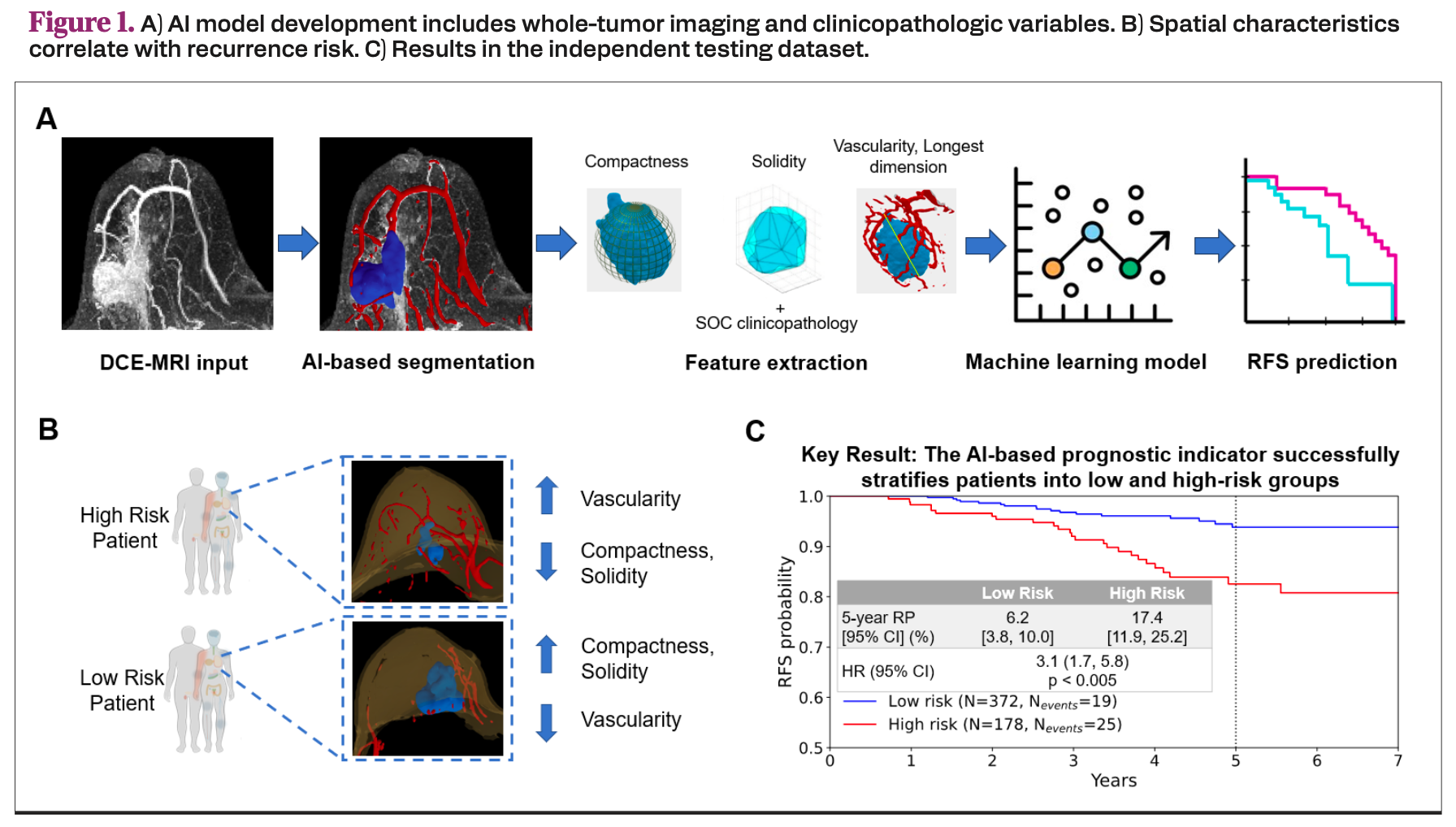81 Assessing Recurrence Likelihood in Hormone Receptor–Positive/HER2-Negative Breast Cancer Patients Directly From MRI Using Imaging AI
81 Assessing Recurrence Likelihood in Hormone Receptor–Positive/HER2-Negative Breast Cancer Patients Directly From MRI Using Imaging AI

Background/Significance
Early-stage hormone receptor (HR)–positive, HER2-negative breast cancer is treated with endocrine therapy with or without chemotherapy. Commercially available genomic assays may not fully capture disease heterogeneity when performed on a single tissue block. Radiographic imaging with multi-modal AI allows for a global assessment of tumor heterogeneity. We developed and tested an AI-based model incorporating pretreatment dynamic contrast-enhanced (DCE)-MRI with clinicopathologic factors to predict recurrence risk in HR–positive/HER2-negative breast cancer.
Materials and Methods
A multi-institutional cohort of 1072 women diagnosed with invasive HR–positive/HER2-negative breast cancer who had follow-up and pretreatment DCE-MRI was identified. Institutions were assigned to either algorithm training or testing, resulting in datasets with 522 and 550 women, respectively. An AI risk model was developed that utilized clinicopathological data (age, race/ethnicity, T stage, N stage, grade) and image-based spatial features of the tumor and surrounding tissues derived from the DCE-MRI (Figure 1A, B). The risk model was calibrated on the training dataset to produce a score correlating with probability of loco-regional recurrence or distant recurrence (hereafter RP). High- and low-risk of recurrence categories were defined by optimizing a threshold in the training dataset. Finally, the risk model was assessed in the testing dataset using this threshold.
Results
In the test cohort, patients had a median follow-up time of 4.5 years, median age of 54 ± 11 years, and 15.6% were African American. The majority of women had T1-T2 disease (89.6%), and 34.4% had 1 to 3 involved lymph nodes. The 5-year RP for women predicted to be low-risk was 6.2% (95% CI, 3.8%-10.0%) compared with 17.4% (95% CI, 11.9%-25.2%) for women predicted to be high-risk (Figure 1C). The adjusted hazard ratio including clinicopathologic factors between low- and high-risk groups was 3.1 (95% CI, 1.7-5.8; P <.005). Similar hazard ratios between low- and high-risk were observed in important subgroups: node negative (3.6; 95% CI, 1.6-8.1), node positive (2.2; 95% CI, 0.8-5.9), age < 50 years (2.5; 95% CI, 1.0-6.2), and age > 50 years (2.9; 95% CI, 1.2-6.8).
Figure 1. A) AI model development includes whole-tumor imaging and clinicopathologic variables. B) Spatial characteristics correlate with recurrence risk. C) Results in the independent testing dataset.

Conclusion
Our AI-based prognostic tool incorporating imaging allows personalized treatment planning in real time in women with early-stage HR–positive/HER2-negative breast cancer. The prognostic benefit exceeded that of clinical features alone and was observed regardless of age and lymph node involvement.
